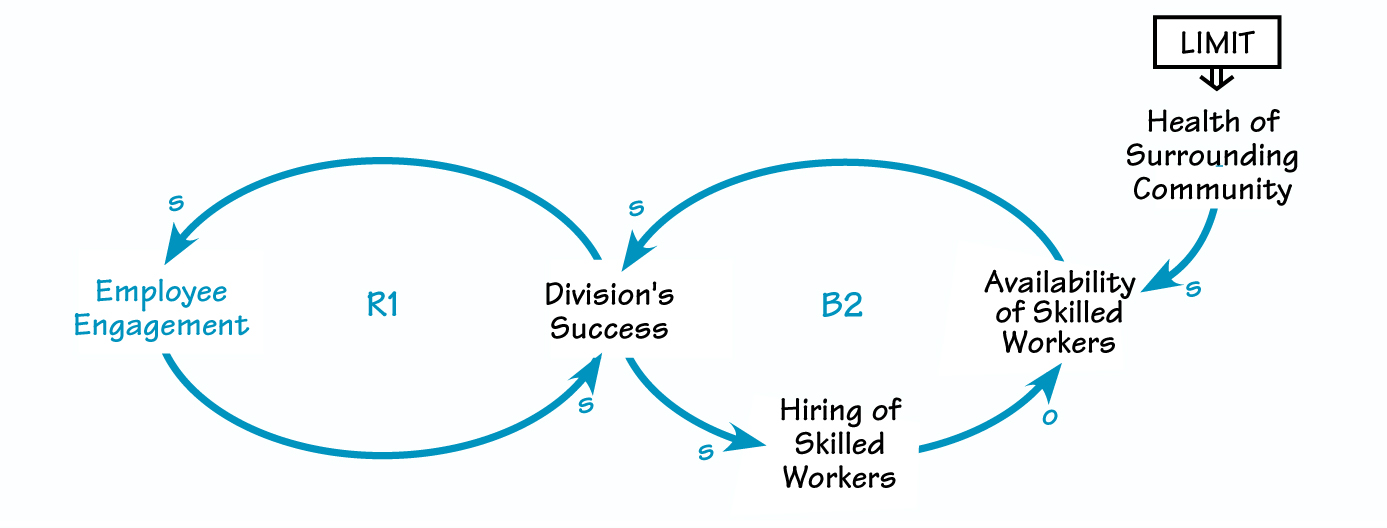In most enterprises, it isn’t enough to achieve success; the key challenge is to sustain it. At this year’s Pegasus Conference, keynote speaker Cristiano Schena, a vice president at heavy equipment manufacturer Caterpillar Inc., recounted how he and his coworkers reversed the fortunes of a foundering business unit in Brazil and sustained that success by overcoming limits they encountered to the division’s growth. His story offers a powerful example of the benefits of identifying and managing forces that can throw the brakes on performance long before its decline becomes noticeable.
The Rebuilding Process
In 1996, Schena was assigned to run Caterpillar’s Brazilian operation, located in the troubled city of Piracicaba. Up until that time, the division’s performance had been less than stellar, and Schena determined to breathe life into the organization by motivating employees to rebuild the business themselves (see R1 in “Limits on Skilled Workers”). This approach and the resulting employee engagement not only helped turn the company around, but in 1999 earned the facility a notable operational excellence certification and the country’s most prestigious quality award. Today, Caterpillar Brazil continues to be number one in the company in terms of financial returns and employee satisfaction.
However, at a certain point, Chris and his management team began to recognize that the state of the larger community could threaten the organization’s ongoing success. The urban area surrounding the factory suffered from high crime and a failing educational system. It soon became clear that the lack of skilled workers could halt the division’s upward trajectory (see B2).
LIMITS ON SKILLED WORKERS

As employees became engaged in rebuilding the division, they created high levels of success (R1). With the rise in success came the need to hire more workers. Because of problems in the surrounding community, management anticipated that, at a certain point, the availability of skilled workers would begin to decline (B2). To overcome this limit, Cat Brazil invested in programs to boost the skills of the local population and make the city appealing to workers from elsewhere.
Overcoming the Limit
To overcome this potential limit, Cat Brazil embarked on worker education and health programs, among other initiatives. In addition, the organization launched a project known as Piracicaba 2010. This effort brought together local officials, entrepreneurs, CEOs, and other community and media leaders to develop a vision and strategy to attract talented people to the city. The goal was to make Piracicaba a model of sustainable development and an excellent place to live.
Caterpillar Brazil offered its resources and strategic planning capability to jump-start the effort, and many employees enthusiastically volunteered their own time toward the effort. Within six months, the initiative was mature enough for the team to hold a town meeting to expand community participation., “By getting citizens to talk to each other regularly in the pursuit of a common goal rather than their own smaller agenda,” says Chris, “the community was able to work together to make the environment more attractive and safer. In fact, now the city not only attracts more professionals but more businesses as well.” A couple of years ago, the Brazilian government selected Piracicaba 2010 as a pilot program for the country to exemplify what needs to be done to regenerate its cities. Since 2002, Brazil’s government has granted funding to run the program, and similar projects have sprung up throughout the country.
Removing Barriers
Sustaining success means more than pushing on an organization’s growth engine; it also involves removing barriers that might impede that growth. As the Caterpillar Brazil story illustrates, the process of removing those hurdles can open up new possibilities both within and beyond the organization’s boundaries, creating an ongoing cycle of growth.
Janice Molloy is managing editor of The Systems Thinker. Kali Saposnick is publications editor at Pegasus Communications.
